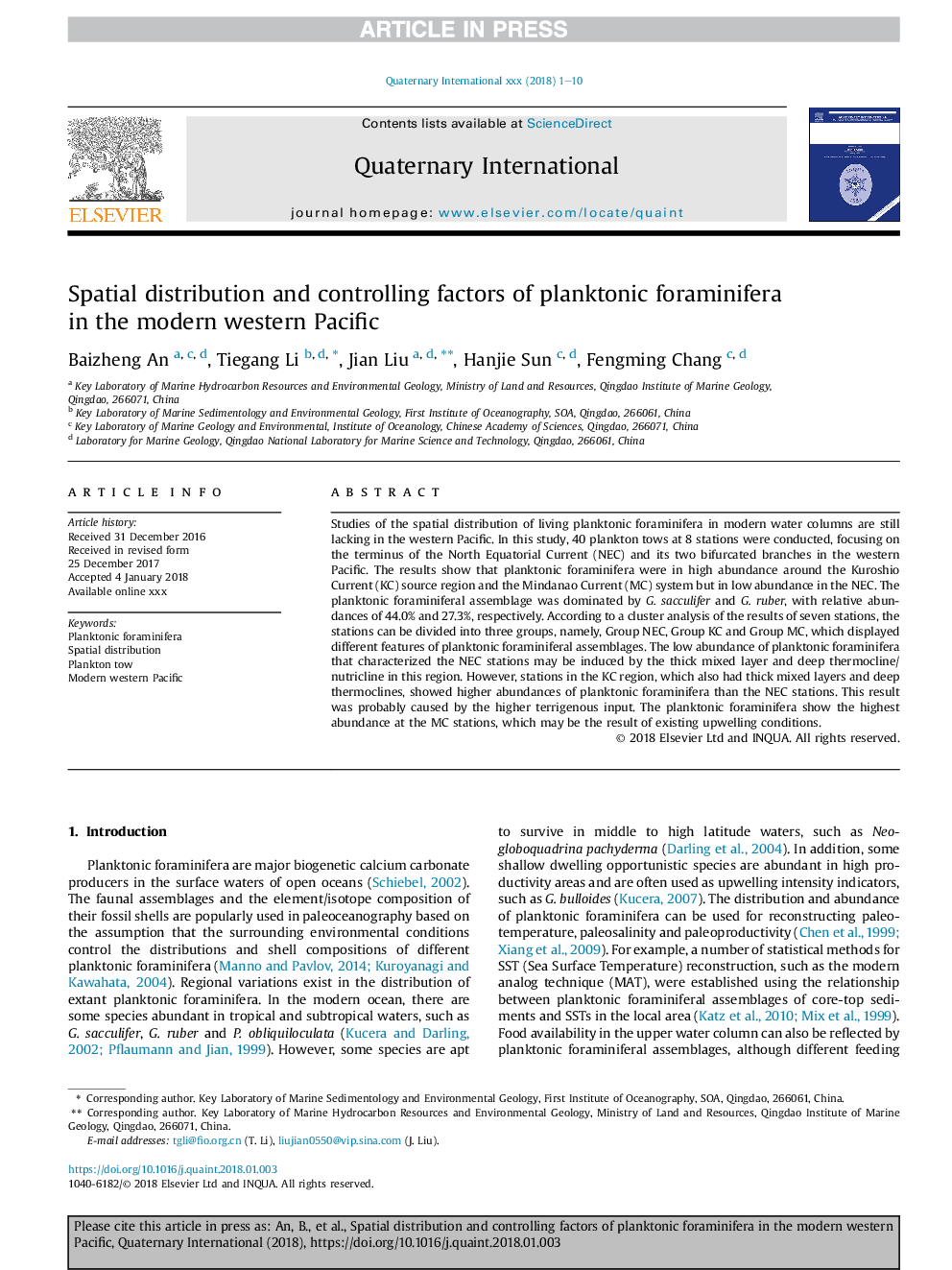| Article ID | Journal | Published Year | Pages | File Type |
|---|---|---|---|---|
| 7450385 | Quaternary International | 2018 | 10 Pages |
Abstract
Studies of the spatial distribution of living planktonic foraminifera in modern water columns are still lacking in the western Pacific. In this study, 40 plankton tows at 8 stations were conducted, focusing on the terminus of the North Equatorial Current (NEC) and its two bifurcated branches in the western Pacific. The results show that planktonic foraminifera were in high abundance around the Kuroshio Current (KC) source region and the Mindanao Current (MC) system but in low abundance in the NEC. The planktonic foraminiferal assemblage was dominated by G. sacculifer and G. ruber, with relative abundances of 44.0% and 27.3%, respectively. According to a cluster analysis of the results of seven stations, the stations can be divided into three groups, namely, Group NEC, Group KC and Group MC, which displayed different features of planktonic foraminiferal assemblages. The low abundance of planktonic foraminifera that characterized the NEC stations may be induced by the thick mixed layer and deep thermocline/nutricline in this region. However, stations in the KC region, which also had thick mixed layers and deep thermoclines, showed higher abundances of planktonic foraminifera than the NEC stations. This result was probably caused by the higher terrigenous input. The planktonic foraminifera show the highest abundance at the MC stations, which may be the result of existing upwelling conditions.
Related Topics
Physical Sciences and Engineering
Earth and Planetary Sciences
Geology
Authors
Baizheng An, Tiegang Li, Jian Liu, Hanjie Sun, Fengming Chang,
